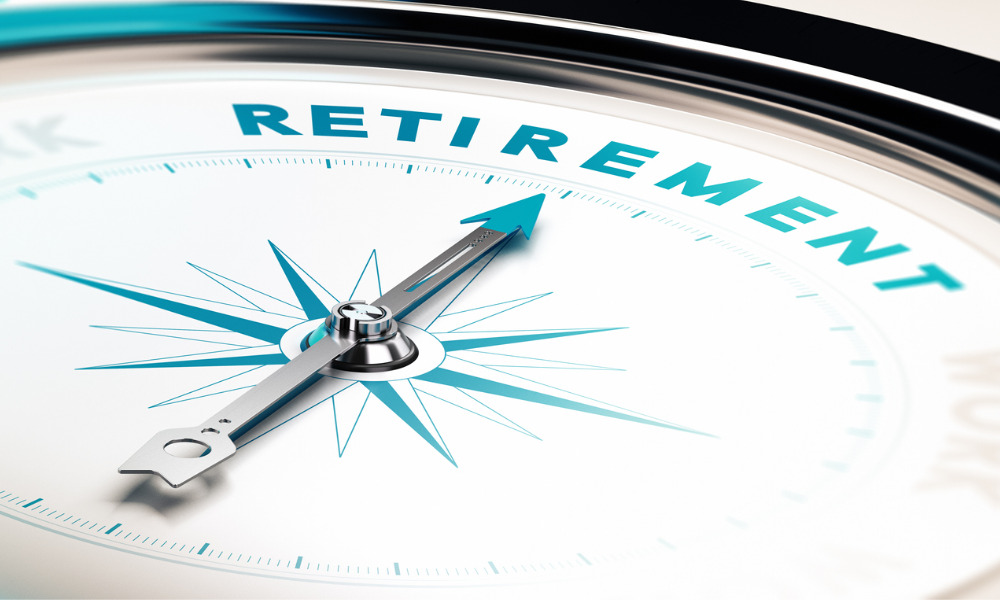- Home
- Archive: July, 2021
What We Must Do to Prepare for Retirement
Have you ever asked yourself why you go to work? When first hearing this question, you may think it’s to buy things or to be able to do things you can’t do without money. Those are both true, yet what people really don’t realize until it’s too late is that the main purpose of working is to make sure that you are taken care of when you are no longer able to work. A lot of people will believe that they can handle this problem by having children, believing they will take care of them when they get old, but oftentimes the kids either aren’t interested or do not have the resources to do it.

Our employers have devised a series of different mechanisms to ensure we have money when we retire, like Social Security, IRAs, 401k, or any other tax free investment program. However, it may not be enough, especially if no alternative measures or budgets have been made. That money can be burned through relatively quickly. It’s kind of a realization that gets a lot of people thinking about, “how will I take care of myself in the future when I get older?”
Think of your future life
In order to effectively plan for your future, you have to have a good idea of what you want to do when you get to that point. Do you want to live in a condo or do you want to live in an RV traveling the country? Where will your funds come from? Will you have enough to cover your expenses, and, if not, what will you have to do to get enough to do that? A surprising amount of people do not actually do this first step and that’s why they encounter problems as they get older.
Speak to professionals
Perhaps you want to plan for your eventual future but you don’t know where to start. There is no shame in getting consultations from accountants, financial planners, and people who work in nursing facilities or with retirees. These people not only have the experience and are trained to understand what you are dealing with, but they have also seen things that will allow them to give you suggestions based on what they’ve seen that worked. You can use their information to create for yourself a comprehensive plan for your retirement.
Do some math
This is how you will be planning for your future. You take your current salary in investments, and you calculate how much you will need to save and what return on your investment you will need to pay for your expenses as you get older. If you had spoken to a professional like in the earlier example, they may also be able to point you to some alternative investments and freebies that are given to senior citizens. Do research on different discounts that different companies give to senior citizens and that may be your saving grace in the future.
Take account of how old you are and how old you want to be when you stop working and check on your investments. How well are they doing right now? What else will you need to do to get you and your funds on the right track? Do you have enough to invest in another business or another security? You have the opportunity now in your relative youth to be creative in figuring out what you will do in this inevitable future.
Understand life is unpredictable
There may be those worried about unforeseen circumstances and health problems. You will also need to think about that while you are planning. Medicare will only be able to do so much. Make a list of all of the charities and all the organizations designed for older people and put that in a list next to the list for your discounts. Review this list from time to time to make sure the companies are still in business and still providing the service that they had promised earlier.
When making your plans, you must keep this one principle in mind; the end goal is to save up enough and have invested enough to where your investments along with Social Security and various help from other sources will allow you to live a relatively comfortable life in your old age. That is the purpose for working which many people seem to forget, but it is the main one that matters. The sooner you figure this out the sooner you will be able to retire with your health intact.
Tips For Getting Rid Of A Headache
Every person has experienced a headache in their lives which comes as a throbbing and constant pain. There are over 150 types of headaches, and you can classify them into two groups.
The first group is known as the primary headache. The cause of it is within the head. They include migraines, cluster headaches, tension headaches, and new daily persistent headaches.

The second type is known as secondary headache, which comes because of another medical condition. These include head injury, high blood pressure, sinus congestion, medical overuse, tumor, and trauma.
Not every headache needs to be attended to by a doctor. At times remedies are the best healer. Therefore, you may use the best CBD roll on to soothe your throbbing headache. Additionally, they also help to reduce various aches and pain in the body. Apart from these remedies, you can also use these tips to combat a cumbersome headache.
1. Dim the lights
Being on your computer for many hours or watching the television without rest can cause a migraine headache. If you are prone to this type of headache, consider covering your windows using blackout curtains during daylight. When you go out, wear sunglasses to shield your eyes from too much light. In your light fixtures, go for daylight spectrum fluorescent bulbs. On your computer, add an antiglare screen to dim the light.
2. Drink plenty of water
A simple action such as taking water can help you to avoid headaches. Dehydration can cause your head pain and alter how you think or act. To keep yourself dehydrated, ensure that you have a bottle by your side. Doctors recommend that you take at least eight glasses per day. You can also get into the habit of drinking water every day once you wake up.
3. Use a cold compress
If you want to ease a migraine, apply an ice pack to your forehead. The cold temperature will work with your nerves to relieve the pain. If you do not have ice cubes, consider placing frozen vegetables on your forehead. Keep it compressed for 15 minutes, then remove it.
4. Use a hot compress or heating pad
If you experience a tension headache, consider using a heating pad at the back of your head or on the neck. If you have a sinus headache, place a warm cloth on the area where you are experiencing the pain.
5. Engage in relaxation practices
Enroll yourself in a yoga class so that you can go through meditation, exercise, and muscle relaxation. Engaging in various relaxation practices can help to reduce your headache.
6. Ease pressure on your head
Sometimes you may experience headaches because of a tight ponytail, constricted swimming goggles, wearing a headband, or a hat. You can loosen these items so that they can go away.
7. Drink caffeine
Some people are addicted to caffeine, and if they fail to take it during the day, it triggers a headache. Drinking caffeine can help to reduce the headache. Some liquids like tea and coffee can be addictive. Therefore, if you cannot maintain the pattern, keep away from them to ease your headache.
8. Rest
If you are a busy person who rarely rests or gets sufficient sleep, you could suffer from a headache. Consider setting aside time for yourself away from stressful situations and take a rest.
9. Avoid chewing things
Chewing gum is a habit that you should avoid, especially if you do it every day. The behavior eventually contributes to head pains. Avoid munching lips, fingernails, and items such as the tip of a pen. When eating sticky and crunchy foods, always take small bites.
10. Take medication
If the headache is severe, consider taking medication in moderation. Always follow the directions of the doctor.
- Consider selecting liquid medication over pills since the body absorbs them quickly
- Avoid giving aspirin to a child who is below 18 years
- Never purchase or take Ibuprofen if you have kidney or heart failure
Contact a doctor if you have:
- A headache after a fall or a head injury
- Feel a sudden or severe headache
- You have a stiff neck, double vision, seizure, or difficulty speaking
Always ask a doctor if you are not sure about your headaches. There are many things they can do for you to help you get rid of it.
How To Make Your Company More Eco-Friendly
In the current climate, global warming and the environment are on the forefront of everyone’s mind. More and more people are aware of the serious issues that arise from unsustainable practices. Don’t let your company get a bad rep by making bad business choices that are bad for the environment. As a business owner, it is your job to do your bit and implement eco-friendly processes within your organization. Here’re a few top tips to help you run a greener company.

The Advantages of a Green Company
An eco-conscious business can boost consumer satisfaction and raise the morale within your business. Not only can you list it under your business values, but being environmentally conscious can attract a broader talent pool when it comes to recruitment. Furthermore, good ethics will catch the attention of eco-conscious consumers.
Use Eco-Friendly Materials
A great way to become more sustainable is by sourcing recyclable and environmentally-friendly materials. Nowadays, manufacturers understand the importance of sustainability and you can find many suppliers who can provide your business with green materials. Large organizations, such as HP Printing, have adopted green changes and you can, too. In addition, you can go green with the materials you use for branding and promotional items. Soyang Europe manufactures and distributes a wide array of printable media. Their eco-friendly choices include solar premium PVC-free banners and textiles made from recycled yarn and recycled plastic bottles.
Implement Solar Energy
Sunlight is in abundance, which makes solar energy one of the leading sources of renewable energy on the planet. This type of energy occurs when sunlight hits certain photo-reactive materials and transforms into an electrical current. Compared to fossil fuels, solar energy creates lower CO2 emissions and it is sustainable. Your company can harness this renewable energy by implementing solar panel technology. Solar panels can be installed on the roof of your building and they last around 25 to 35 years. They can lower electricity costs and are an excellent return on investment.
Reduce Paper Waste
Many offices are trying to become more environmentally-friendly, join the trend and reduce your paper waste. By going digital you can get rid of your paper trail and reduce your company’s carbon footprint. Go paperless by removing the printers and copiers from your business and train your staff to send files digitally instead. This is a fantastic way to boost productivity as it reduces the amount of walking back and forth in the office, and it makes files and documents more accessible. Not to mention, printers and copiers are expensive to run. By cutting them out you no longer need to purchase paper and ink, and you won’t have to pay to maintain printers anymore.
Create a Green Team
Creating a green team allows you to delegate certain responsibilities to your employees. A green team is in charge of managing sustainable activities and initiatives within an organization. They can help keep your company environmentally-friendly, and they can introduce new policies that will make your company more green.
3 Things To Consider When Getting Financed

There are many things in life that you may need or want to purchase but won’t be able to afford the total cost of up front. This is completely normal and is something almost everyone goes through, no matter how much money they make. If you’re considering one of these larger purchases and have never had to get financing before, you likely are confused about how the process works and have a lot of questions. Whether you are getting financed for an aircraft, a car, a house, or plastic surgery, there are many things you should know beforehand. Here are 3 things to consider when getting financed.
Your Credit
One of the first things anyone will ask you when you inquire about getting something financed is your credit history and credit score. Before even trying to get financing set up, you should find out as much about your own credit as you can and do whatever you can to fix it if you need to. There are many different companies that can help you with this if you don’t know where to start, but the best way to begin is to get a free credit report online.
This will at very least let you know what your credit score is so that you will have an idea of where you stand. Keep in mind that the better your credit, the better the rates you will get.
Your Income
Unfortunately your income level will play a large part in getting financing, no matter what it is that you’re trying to purchase. You’ll need to make sure that you are making enough to be able to afford the monthly payments without it being too much of a stretch and causing you stress.
Remember that you will be responsible for making these payments every month, no matter what type of hardship befalls you. If you don’t think you’ll be able to afford them at any point or aren’t sure, it’s probably best to just hold off until your income level is a bit higher.
Your Employment Future
Related to your income, you also definitely need to consider your employment future when thinking about getting financed for a big purchase. If you are planning on retiring soon, for example, you will probably be making significantly less in the future and may no longer be able to afford your payments.
On the other hand, if you are moving up in your company and know you will be getting a raise in the near future, now might be a really good time for you to get something financed because you know you will be able to afford future payments.
Deciding to make a large purchase is very exciting and can be life-changing. Just make sure you are prepared before getting something financed and everything will go smoothly.
4 Biggest Mistakes People Make When Building a Structure

Building a structure can be a lengthy process that when done incorrectly, can end up costing you a lot of money in the long run. In order to minimize development costs, it is important to know which projects you can handle on your own and which should be entrusted to the experts before beginning construction. To avoid making costly mistakes, keep in mind these four mistakes you can make when building a structure.
Rushing the Groundwork
In this context, groundwork refers to the foundation itself but also the planning that will take place beforehand. Seek out a contractor to draw up plans for you. This will allow you to decide which of the projects you will be able to take on yourself. If it all seems to be a bit out of your league, it’s best to leave this part to the experts. Don’t make the mistake of rushing things along – take your time and choose the construction company that has the most expertise in the type of structure you want to build. This will not only give you peace of mind but it will also prevent structure failure. Properly laid groundwork means your structure will stand the test of time.
Not Choosing the Right Location
Choosing the correct location is the first step in your construction journey. In the cases of commercial and residential properties, it is important to evaluate the neighborhood. You could even go so far as to canvas the area and speak with the people living and working there. The areas surrounding your new structure will play a role in the property value. Skipping this step could result in a decreasing value due to a poorly-chosen or inaccessible location.
Neglecting the Administrative Processes
Do your homework! There is lots of paperwork involved with building a new structure and you will need to acquire the appropriate permits. Consult your city’s website and make sure you have your ducks in a row before skipping to the next step. You will need licenses and permits for everything from leveling the ground to installing plumbing and electricity. Fill out the paperwork and abide by the administrative process set out by your local government in order to avoid hefty fines later on.
Skipping the Inspection
Once the structure has been built and the final touches are being added, now is the time to have your structure inspected by one, or a few different professionals. Again, this may vary depending on the type of property you have. Inspectors are not the bad guys, it is their job to make sure everything is up to code so that everyone in and around your new building is safe. After the inspection is complete there might be a few small changes to make. However, if you chose a trustworthy and knowledgeable contractor, these changes should be minimal. Any good contractor will already be familiar with the required regulations and will make sure your structure is up to code.
A Beginners Guide to Board-to-Board Connectors
There are many different industries and products that use board-to-board connectors. This is because they have an incredibly strong transmission capacity among all of the other connector product types. Even though they are used frequently, chances are, the general consumer is not even aware of them. This begs the question, what actually is a board-to-board connector? This article will discuss exactly that, as well as its classification, characteristics, and their advantages.

What is a Board-to-Board Connector?
Board-to-board connectors are a miniature coupling plug and socket. They have the ability to connect power and signals using the pins of the connector through different circuit boards. Copper alloy materials are generally used in the production of such connectors, which is beneficial as it stops them from oxidizing.
The Classification and Characteristics of Board-to-Board Connectors
There are many different classifications and characteristics that board-to-board connectors have. The different types of connectors include:
- Pin header and pin/pin
These are the cheapest form of connector and are incredibly convenient to use, plus the connection they tend to create is very stable and is hard to accidentally disrupt. That being said, these are also very large connectors and are hard to bend, meaning they are not ideal for a lot of different products.
- High-end Board-to-board rows
These are much denser than the aforementioned pin header connectors and are often used in conventional smart hardware products. These can be beneficial as the number of pins they have is large; however, their volume is small.
- Thickened Board-to-Board Connectors
Often used in the production of test boards and development boards, thickened connectors are beneficial given they are cheap and very easy to both connect and measure. That being said, similar to pin headers, they are very large and also difficult to fix.
The Advantages of Board-to-Board Connectors
Board-to-board connectors would not be used as frequently as they are if they did not come with a wide range of advantages. These include (but are not limited to) the following:
- Simpler Design
The circuit board design process can be incredibly tricky, and thanks to the use of board-to-board connectors, this can actually be made much more simple.
- Simpler Production
Of course, they make the design process much more straight-forward and streamlined, they are also responsible for simplifying the production and testing of electronic equipment. This can be economically beneficial to lots of organizations, such as those who operate in electronics manufacturing, as simplified testing reflects huge cost savings.
- The Third Dimension
Thanks to the use of board-to-board connectors, it is possible to use through-hole technology to allow the third dimension to connect traces and components on the PCB.
Conclusion
Board-to-board connectors are an incredibly effective means of simplifying the design and production of separate circuit boards. They can come in different connectors, including pin header, high-end, and thickened. All of these different boards have their own advantages and disadvantages and so are used by a variety of organizations.






